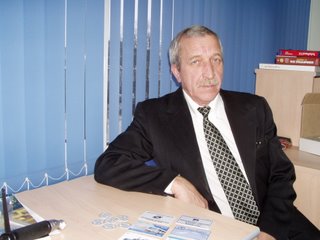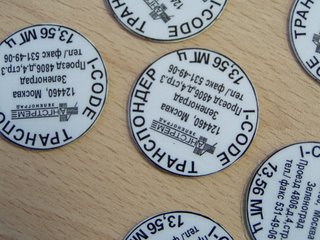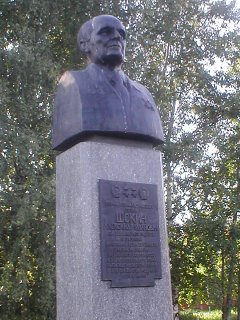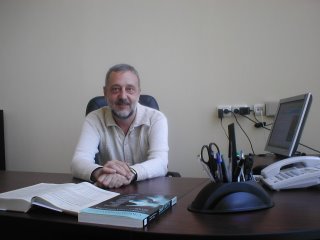Linc Jepson & Julia Nekrylova, 74ze Engineering, Inc.
Recently in Silicon Valley, a group of Russian immigrants held the first Silicon Valley Open Doors conference to assist technology companies from former Soviet countries to gain exposure and to network with venture capitalists and potential technology partners. Venture capitalists and successful Eastern European entrepreneurs from the US spoke about the role of venture capital, how VC firms select investments, and their experiences in building companies.
Maxim Levchin (at the photo - Panel Discussion: Entrepreneurship: Founding and Funding a New Venture M. Levchin, Co-founder Pay-Pal. C. Holloway, Kleiner Perkins Caufield and Byers. J. Malloy, BlueRun Ventures.), the co-founder of PayPal and one of his lead investors, John Malloy of BlueRun Ventures, sat on a panel and fielded questions about founding and funding a new venture. Max joked about having gone through six business plans for what eventually became PayPal and having previously failed at a few businesses he created. Emphasizing that “trial and error is the most likely result of a lot of companies”, he stressed that “nothing beats the practical trial”. John echoed this in stating that when they finally did settle on a plan, “what really impressed me was the speed at which they attacked the problem and put together a prototype”. Stressing that investment is a ‘people-business’, John cited the founding team as his focal point in making an investment, followed by the market and then the by the plan’s technical advantage. Addressing the audience of Eastern European entrepreneurs, John acknowledged, “it’s hard to put yourself out there [when looking for funding]”, but “I appreciate persistence.” He further cautioned that upon being rejected, entrepreneurs should ask for an elaboration on why the investor is passing and suggested to be bold enough tell them “I will prove it to you”.

Pitch Johnson, a founding partner of Asset Management company, has been investing in technology since the early 1960s. Reflecting on the considerable amount of time he devoted to investing in and developing the venture capital market in Eastern Europe, he expounded upon the non-financial assistance venture capitalists provide to enterprises. Indicating the importance of the personal and open relationship required between an entrepreneur and investor, Pitch stressed that venture capital is a “local business” and cautioned against investment in a remote company unless the investor has the resources to maintain a close advisory relationship with the executive team at their remote location. In response to an inquiry about the lack of qualified management in Eastern Europe and the benefits of bringing in Western-trained executives to run start-ups there, he pointed out that in the long-term the progressing economies and MBA programs in Eastern Europe were developing the needed people. For the moment, however, Pitch noted that “almost no business plan in Russia ever has a marketing plan – but great technology.”
A successful entrepreneur who currently works with a team in Ukraine, Juha Christensen, echoed the concern about a lack of experienced management, citing “It’s easy to find people who want to solve hard problems, but don’t want to sit and make Gantt charts.”
Funds and investment groups such as Russian Technologies, Delta Private Equity, Intel Capital, and DFJ-Nexus are slowly building interest in Eastern European technology companies and all participated in the conference. Joe Bowman of Russian Technologies elaborated on the opportunities for investment in Eastern Europe and discussed the challenges of doing so. Citing a lack of exposure to aspects of Western business practices, his firm finds itself looking for ‘diamonds in the rough’, helping them to develop a business plan, assemble a qualified team, evaluate the market, and then seek a co-investor.
Besides the talks from the West about venture capital and successful business practices about forty Eastern European enterprises presented their business plans and technology. A sample follows.
WOSTEC, a Yaroslav-based Russian Technologies investment, is developing a next generation lithography solution.

Proposing a therapeutic treatment of progressing myopia,
MACDEL has created a non-contact laser radiation procedure.
Yurii Maletin of National Technical University of Ukraine (KPI), presented his departments work on supercapacitors, which might be utilized for pulse power and for load leveling.
Sborka Laboratory, a Russian company, presented its APMatrix Display project, targeted at developing, manufacturing and marketing very large (greater than 100 inches), high-resolution ( ~ 80 dpi) full-color flat ( ~ 0.5 inch) displays.
Ferrobit, a start-up from the A. Ioffe College of Physics and Technology in St. Petersburg, jointly works with Tokyo University to develop silicon-like materials for non-volatile, magnetic memory based on electron spin injection.
Rodnya, a Ukraine-based firm, presented its microcontroller development, which is based on what it terms a “Reductional architecture”.
For now, judging by the optimism of tech émigrés in the US, the future is bright, but somehow the luster of Eastern European hi-tech seems to be permanently eclipsed by activity in other regions of the globe. Eastern Europe is revered worldwide for its high caliber of science and technology talent; however, its entrepreneurial foundation is generally considered to be immature.
Pitch advised the foreign visitors at SVOD to “by your vote and noise, influence legislation” and that in the end “you get to decide what to do” and “are only limited by your own dreams and ideas”.
Let this article be an impetus to Eastern European scientists and technologists to not only remain focused on their R&D, but also to increase their awareness of the forces and trends which drive that development. The world is watching.
*Perhaps it is important to note that the consumer markets of rapidly developing economies are also highly sought, sometimes more than the labor.
Also you can read:
http://www.eetimes.com/op/showArticle.jhtml?articleID=175800053








